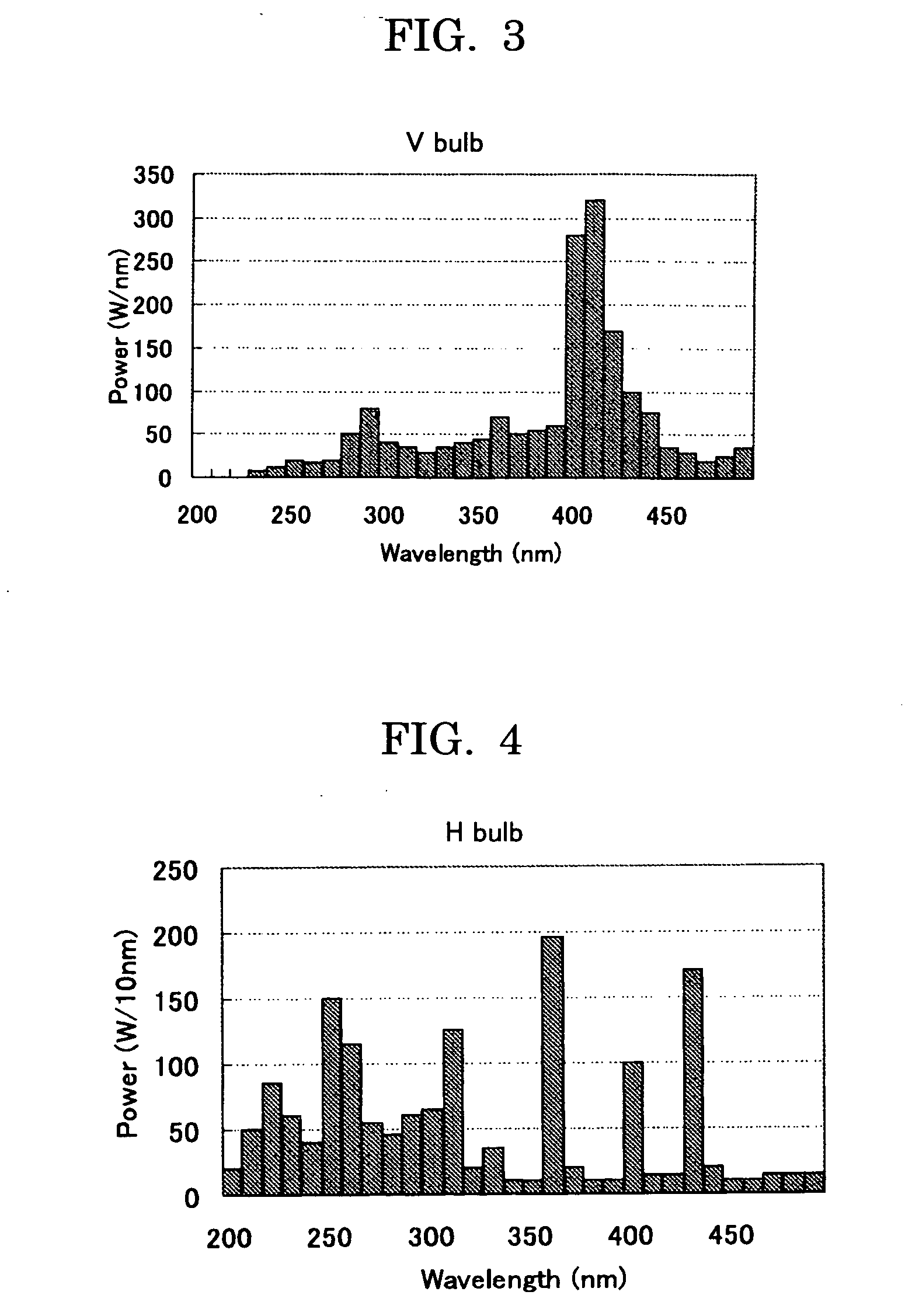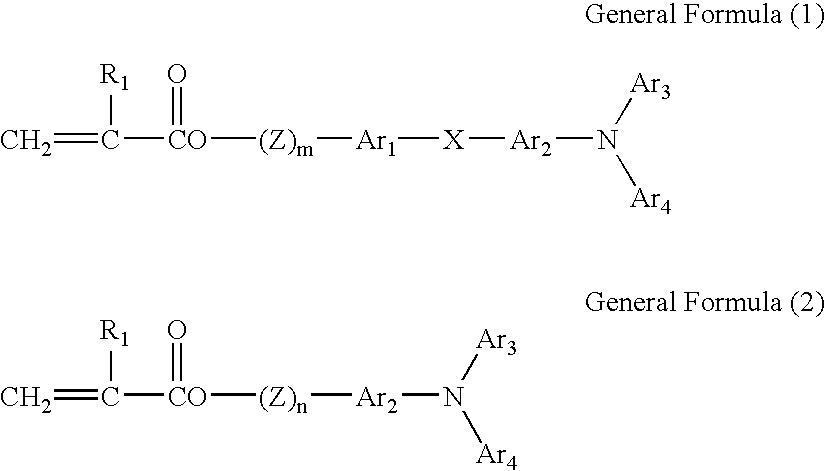Electrophotographic photoconductor, process cartridge, and image forming method
a photoconductor and photoconductor technology, applied in the field of electrophotometric photoconductor, process cartridge, image forming method, can solve the problems of insufficient removal of residual toner, weak physical strength, abrasion and flaws, etc., and achieve the effect of minimizing the difference in cured condition, efficient cure of surface layer, and excelling in electric properties
- Summary
- Abstract
- Description
- Claims
- Application Information
AI Technical Summary
Benefits of technology
Problems solved by technology
Method used
Image
Examples
example 1
—Preparation of Photoconductor—
[0236] Over a surface of an aluminum cylinder having a diameter of 30 mm, an undercoat layer coating solution, a coating solution for an electric charge generating layer, and a coating solution for an electric charge transporting layer, respectively having the following composition, were applied sequentially, and the coated surface of the cylinder was dried to thereby form an undercoat layer having a thickness of 3.5 μm, an electric charge generating layer having a thickness of 0.2 μm, and an electric charge transporting layer having a thickness of 18 μm.
[Undercoat Layer Coating Solution]alkyd resin 6 parts(Beckozole 1307-60-EL, available from Dainippon Inkand Chemicals, Inc.)melamine resin 4 parts(Super-beckamine, available from Dainippon Ink andChemicals, Inc.)titanium oxide40 partsmethylethylketone50 parts
[0237]
[Coating Solution for Electric Charge Generating Layer]bis-azo pigment represented by the following Structural Formula (3)2.5partspolyviny...
example 2
[0241] An electrophotographic photoconductor was prepared in the same manner as in Example 1 except that the radical polymerizable monomer having an electric charge transportable structure of Example 1 was changed to the one represented by the following structure.
Radical polymerizable monomer having an electric charge10 partstransportable structure(Triarylamine Compound Example No. 1)Absorption edge wavelength: 369 nm
example 3
[0242] An electrophotographic photoconductor was prepared in the same manner as in Example 1 except that the radical polymerizable monomer having an electric charge transportable structure of Example 1 was changed to the one represented by the following structure.
Radical polymerizable monomer having an electric charge10 partstransportable structure(Triarylamine Compound Example No. 13)Absorption edge wavelength: 397 nm
PUM
 Login to View More
Login to View More Abstract
Description
Claims
Application Information
 Login to View More
Login to View More - R&D
- Intellectual Property
- Life Sciences
- Materials
- Tech Scout
- Unparalleled Data Quality
- Higher Quality Content
- 60% Fewer Hallucinations
Browse by: Latest US Patents, China's latest patents, Technical Efficacy Thesaurus, Application Domain, Technology Topic, Popular Technical Reports.
© 2025 PatSnap. All rights reserved.Legal|Privacy policy|Modern Slavery Act Transparency Statement|Sitemap|About US| Contact US: help@patsnap.com



